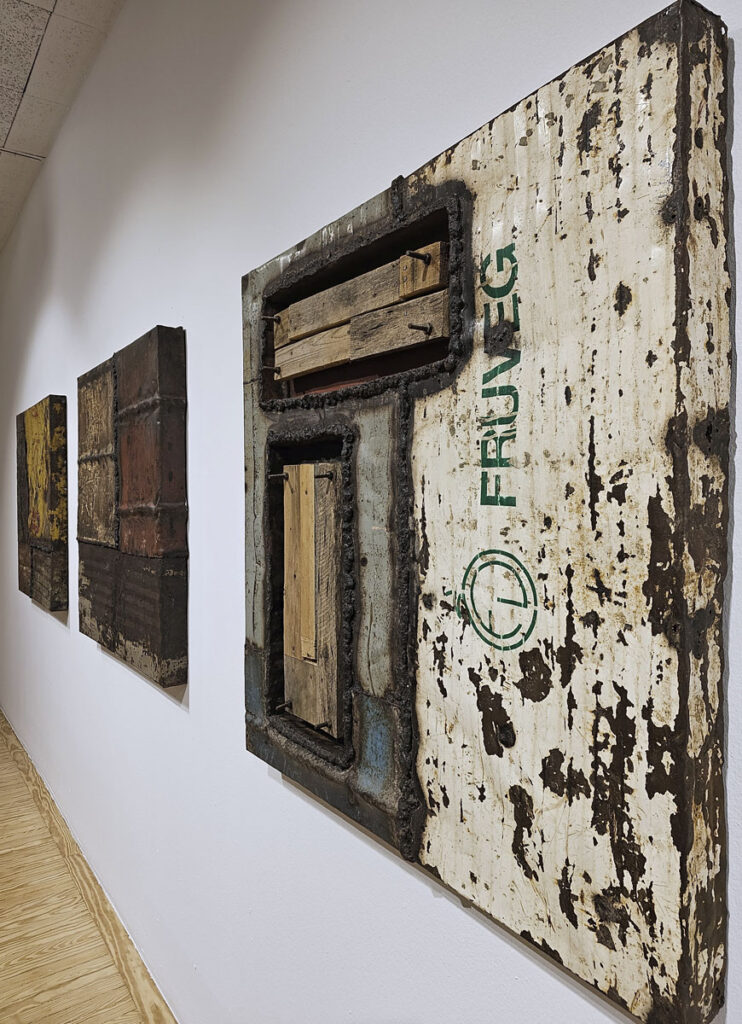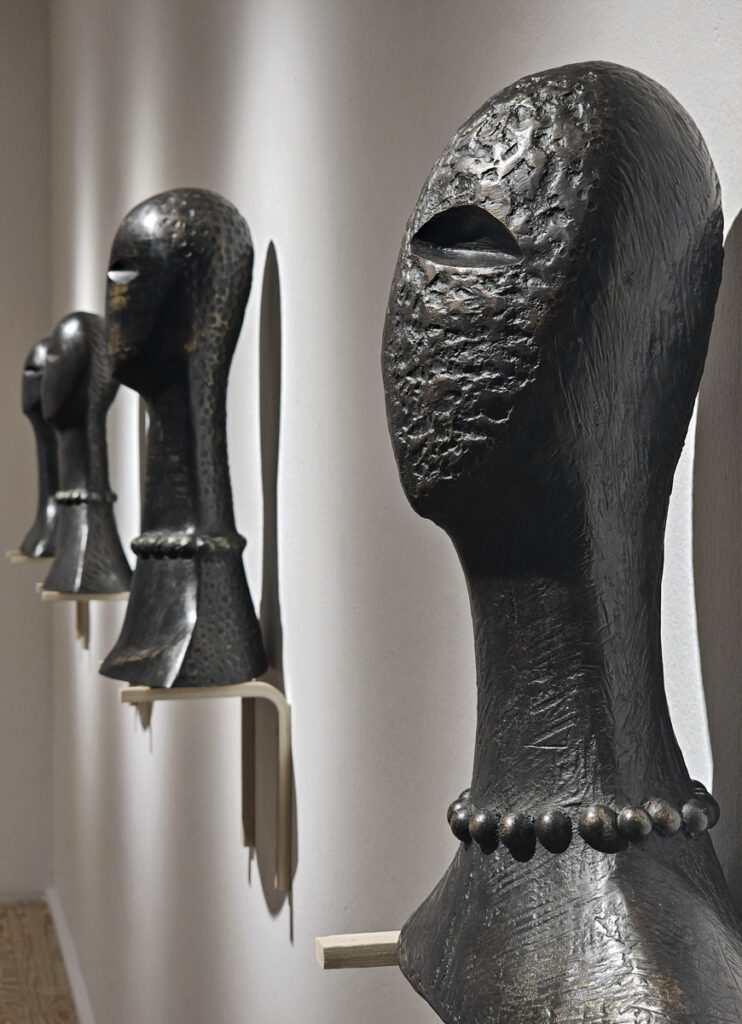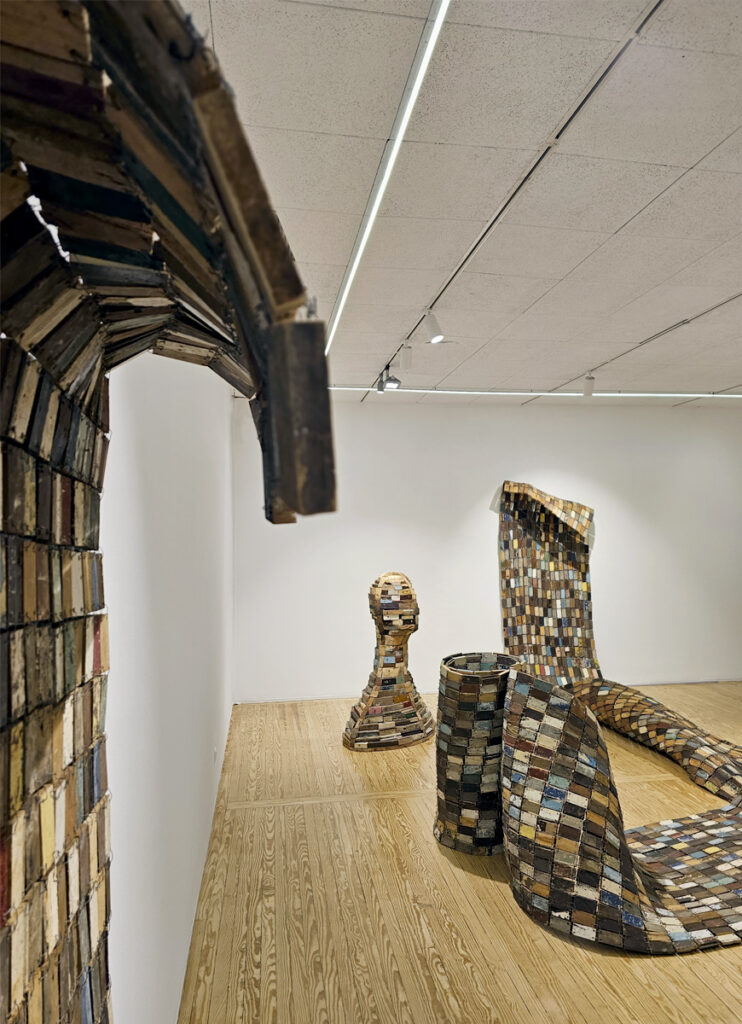Casa de América (Madrid)
OCTOBER, 11 – DECEMBER, 9
“The Darkness Was the Beginning” is the first institutional exhibition of the prolific Cuban artist Roberto Diago (Havana, 1971), who has become one of the most prominent creators of his generation, both within and outside his native island, over the course of more than three decades of work. His work has built a robust body, thanks to its undeniable and accurate straightforwardness that embraces. It’s an art that always evokes an embrace. There’s something in its constitution, often grandiloquent, that makes us think of this as a production embraced rather than handled, sometimes because it tends to stretch into space like a spill, a rupture, a slap in the eyes, rather than a caress. This violence indicates the strength of the arm more than the delicacy of the hand, even when the hand is detailed and precise, when he, Diago, wants it to be.
Connected to the anthropocentric tradition of Cuban Art that explores Afro-Transatlantic legacies, initiated by the groundbreaking and avant-garde work of Wifredo Lam, the mysterious painting of his paternal grandfather, Roberto Diago, and the voluminous sculptural flesh of Agustín Cárdenas in the mid-20th century, and continued by the Cuban revolutionary process, as represented by the fabulous and mystical work of Manuel Mendive, the neo-expressionist graphology of Eduardo Choco, or the anthropological research of José Bedia and Marta María Pérez Bravo; Diago delves into art from his racial condition as a Black man, urbanite, city dweller, Habanero, descended from artists and musicians, as an individual marked by the transitory nature of the fin de siècle, where the diaspora ceases to be an escape and becomes a home, a contour, a familiarity as a starting and ending point. It’s as if the point itself, that not always perfect black stain, more than turning into a line, turns into a stain that travels through space, were his obsession. Or perhaps, restoring its flaws is his goal. He is an heir to a legacy and a bearer of a culture that engulfs him. Roberto is a creator who works intensively in various languages, including drawing, painting, sculpture, and installation. Inverting the scriptural logic of the “blank page,” knowing that initially, it was always darkness from which light was born, not the other way around, Roberto Diago has been writing his history visually, re-writing that of his contemporaries, sharing his work just like the metaphor used earlier, because it embraces us, just as the universe embraces this globe we inhabit.
Exhibiting this ancestral and contemporary “cosmogony” that Diago offers us is the aim of this curatorial exhibition. It’s an individual exhibition, the first institutional one in Spain for Diago, which opened at CAJI (Centro de Arte Juan Ismael) in Fuerteventura last summer and is now traveling to Madrid this fall, thanks to the interest of Casa de América. The exhibition will feature nearly twenty works, including paintings, installations, and sculptures, curated in groups of seven sets. The museography aims for each space to feel inhabited by its visitors – those of Diago, those silent and accusing figures, and by ourselves, citizens of a world that strives to be better every day.
This exhibition includes new pieces like the floor installation: “Queloides III” (2023), created specifically for the CdA galleries. The exhibition also comes with a monographic publication about Diago’s work, featuring authors such as Bárbaro Martínez-Ruiz, Ph.D. at Yale University, Director and Founder of Orbis Africa Lab, Director of the Cátedra de Estudios Africanos at Indiana University, who wrote the foreword; Suset Sánchez Sánchez, Curator of Latin American Art at the Collection of MNCARS, and Janet Batet, an independent curator and contributor to the Nuevo Herald of Miami, among others. They provide essays, along with Rito Ramon Aroche, an Afro-Cuban poet and founder of the Grupo El Palenque, who has gifted us with fourteen unpublished poems under the title “la pirámide de aire,” and the project’s curator and editor. This ambitious presentation of the artist in the Spanish and European context would not have been possible without the invaluable support of the Artizar Gallery (Tenerife).
OMAR-PASCUAL CASTILLO
Curator
Roberto Diago is one of the most recognized contemporary artists in Cuba. Born in 1971, he studied at the San Alejandro Academy in 1990 and works as a Consulting Professor at the Instituto Superior de Arte, Havana.
The everyday is the material of his work, he makes use of the materials that everyday life offers him and gives them a symbolic charge in an act of cultural resistance. His work reflects his interest in the legacy of African culture brought by slaves to Cuba, and how it is presented in Cuban society today.
He has had important exhibitions at the Lowe Museum in Miami, The Clement Foundation in Martinique, Harvard University Museum, etc. He works with galleries in the United States, Cuba, Germany and Spain among others and is a regular figure in the best art fairs in the United States and Latin America. He has also shown his work in fairs such as ARCO Madrid or FIAC Paris, as well as in the biennials of Venice, Havana or Dakar. His work is in the permanent collections of the National Museum of Havana, Deste Foundation of Athens, Brownstone Foundation of Paris, CIFO Collection of Florida, Boston Fine Arts Museum or Jorge M. Pérez Museum of Miami, among many others.

Organized by:
CASA DE AMÉRICA
(Madrid, España)
Produced by:
GALERÍA ARTIZAR


